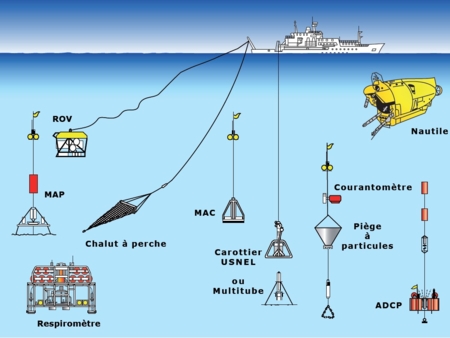Spatial and temporal dynamics of archaeal and bacterial communities in deep marine sediment from the Mozambique Channel
Marine sediments are the largest methane reservoir on Earth which is present as free, dissolved or gases hydrates and locally expelled at cold seep areas. Circular depressions (pockmarks) have been identified during the Mozambique Channel exploration on Mozambique and Madagascar continental margins. These environments are characterized by cold fluids migrations containing reduced chemical compounds which promote the development of specific chemosynthetic microbial communities. Seepage fluxes can vary in composition and over time and space, impacting carbon and energy sources availability and thus the microbial communities’ distribution.
Microbial community diversity and distribution as well as the crucial environmental factors shaping the communities distribution were studied and compared among four pockmarks sites. The sampling strategy provides a spatial resolution depending on the depth (centimetric and metric scales below the seafloor) and on the distance to the physical pockmark center. Archaea and Bacteria diversity was analyzed by 16S rRNA high throughput sequencing and methanogen microbial communities were investigated by coupling molecular biological methods (ITS ARISA, mcrA) and isotopic enrichment (DNA-Stable Isotope Probing). Archaeal and bacterial diversity profiles can provide information on pockmark “eruptive” or “quiescent” activity mode and raise questions about the concept of communities’ resilience in such fluctuating ecosystems. More specifically, this work has highlighted :
• the diversity and distribution of microbial communities associated with four pockmarks from the Mozambique Channel, and especially those implied in the methane cycle;
• the spatial dynamics of the microbial communities, horizontally (at the regional and local scale) as well as vertically (depth below the seafloor) in relation to the structuring environmental factors;
• the temporal dynamics of the microbial communities at one pockmark scale, between 2014 and 2015;
• the diversity of the active methanogenic communities and the trophic pathways involved in methane production.







